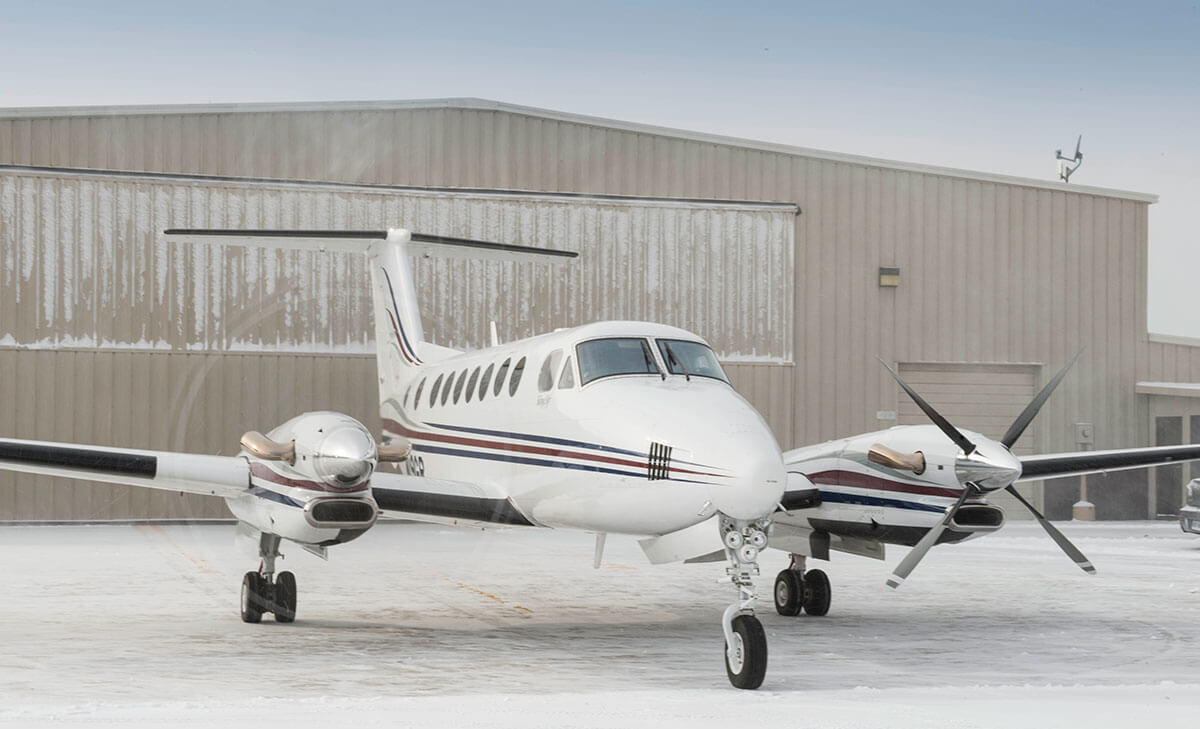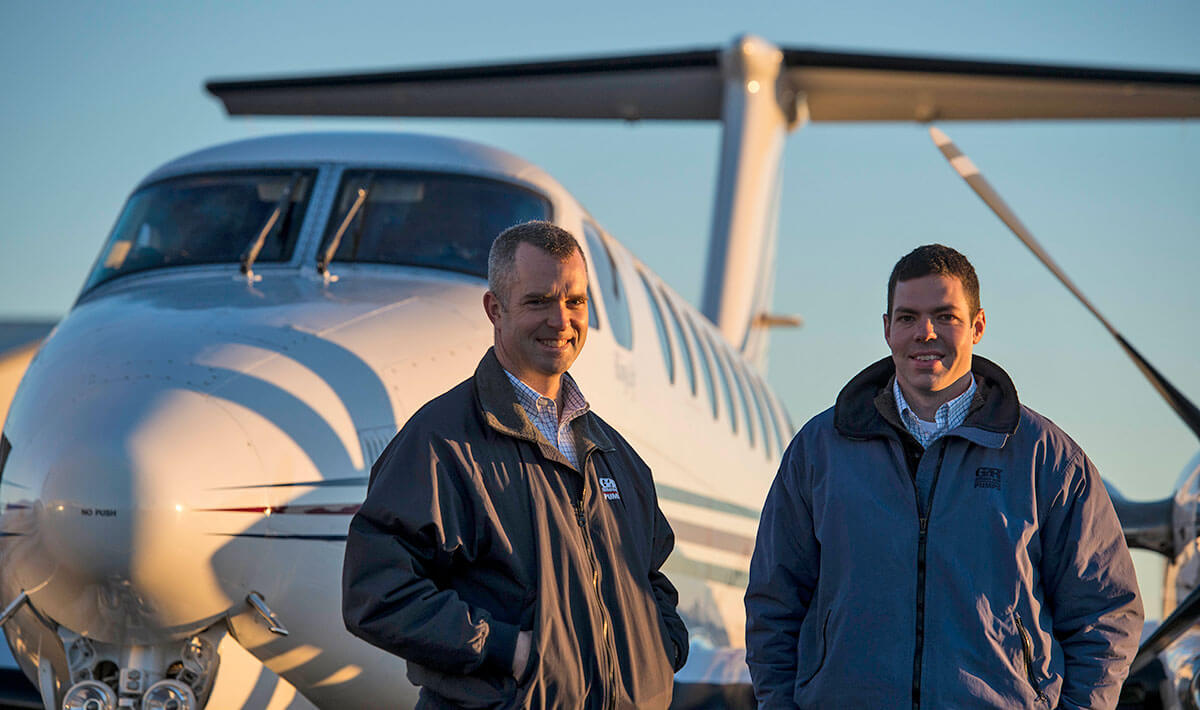
Member Gorman-Rupp uses its King Air to sell products, and the company culture.
April 1, 2013

When Gorman-Rupp Company first began using business aircraft just after World War II, company personnel primarily flew to visit customers. Today, Gorman-Rupp uses its King Air 350 mainly to bring customers to its headquarters in Mansfield, OH, where the company can demonstrate its wide range of fluid-handling products – from fractional-horsepower pumps to large flood-control systems – and show clients firsthand how it is dedicated to building quality products that are delivered on time and backed by reliable service.
Because Gorman-Rupp cannot take its larger pumps on the road, “the best way to sell our product is to get the customer in front of it, show him what it can do, train him and answer any questions,” declared Jeffrey S. Gorman, president and CEO.
Vince Baldazar, sales manager for Gorman-Rupp’s Engineered Systems Group, added, “It’s not so much that we are bringing them here to sell them something; we want to show them our culture and philosophy and that we understand their industries.”
Anatomy of a Factory Visit
Gorman-Rupp employs 1,400 people and manufactures more than 4,000 different pumps, 70 percent of which move water. The largest ones are used in municipal water- and sewage-treatment systems. Because the company sells its pumps through distributors, those business associates are key players in the customer visits, which occur about 50 times each year.

For the typical factory trip, the eightseat twin turboprop is dispatched early in the morning to pick up a distributor and seven of its customers – usually mayors, consulting engineers or water-treatment plant operators. When they arrive in Mansfield, usually by 10 a.m., a Gorman-Rupp sales representative greets them as they deplane. Then, the guests are driven a quarter mile from the airport to Gorman-Rupp headquarters, where they receive instruction on pumps and pump systems. After lunch, they tour the plant and later have dinner with their hosts.
Perhaps the most important part of the visit occurs the next morning, when customers go to the “pump room” to see product demonstrations. The high-tech auditorium, which can simulate various pumping operations, gives customers invaluable insight into how Gorman-Rupp systems are designed, operated and serviced. Finally, around 11 a.m., the visitors fly back home.
Maximizing Utilization, Safety
Darren Hamilton, manager aviation department, said, “We try to maximize the use of the company airplane.” Customer trips, which Gorman-Rupp has been flying since 1968, are scheduled a couple of months in advance, as are quarterly trips that top managers make to each division. In between, the King Air flies salespeople or production staff who need to visit suppliers.
An example of the airplane’s utility is its ability to fly directly to airports near Gorman-Rupp’s many locations. Jeff Gorman noted, “Most of our facilities are located outside of major metro areas, so we rely heavily on regional airports.” In fact, access to the airport in St. Thomas, Ontario played an important role in Gorman-Rupp’s establishment of a Canadian facility there. St. Thomas, located just across Lake Erie from Cleveland, is an eight-hour drive from Mansfield, but only a 40-minute flight in the King Air.

Of all the missions, trips to support customers are the top priority. Chairman James C. Gorman said, “Our service department has first call on the airplane. If a customer is in trouble, we won’t hesitate to put a couple of technicians on the airplane and send them out to correct the problem.”
Gorman-Rupp uses two pilots for all passenger operations, and the flight department, with the endorsement of management, takes a conservative approach to flying.
For each trip, Hamilton and his copilot do a mission brief. “Both of us look at the weather and consider alternate airports, the MEL [minimum equipment list], how we are feeling and how important the mission is,” said Hamilton. “If either of us notices anything out of the norm, we discuss it. We weigh those factors before making a go/no-go decision. We never feel pressure [to go] from the people who fly with us.”
The Gorman-Rupp crew made a good decision on Feb. 12, 2009, the day that Colgan Air Flight 3407 crashed in Buffalo, NY. The King Air was scheduled to fly to nearby Niagara Falls, but turbulence, icing and wind shear were forecast, and there was an MEL item on the airplane. “We had things stacking up against us,” said Hamilton, “so we made the call that we weren’t doing this trip.”
Gorman-Rupp crews attend simulator training on a regular basis, and the flight department is considering implementing a safety management system to further enhance safety. “We always want to try to constantly improve,” said Hamilton.
Flying Into the Future
Jeff Gorman calls the King Air 350 a “workhorse” that has “a tremendous ability get into relatively short regional strips.” However, since the company has expanded into Texas, Arizona and California, he can see a need for an additional, faster airplane someday.
But no one at Gorman-Rupp can imagine operating without an aircraft at all. “It would be very hard to do without an airplane, especially being located where there is no commercial service,” said Jeff Gorman. “The airplane has made us not only a more efficient company, but a better company.”
Jim Gorman agreed, adding, “The flight department is clearly a very important part of our sales department.”

A Tip for Canada-Bound Flyers
Darren Hamilton, Gorman-Rupp’s aviation department manager, offers this tip to operators flying to Canada: Get the badge number of the Canadian customs agent issuing your clearance number.
“We had one situation when the customs agent didn’t enter the number into the system, so the next time we went into Canada, it showed we hadn’t cleared customs properly,” explained Hamilton. “If you retain the clearance number from your last trip, as well as the agent’s badge number, you can prove you did things properly.”



 International Business Aviation Council Ltd.
International Business Aviation Council Ltd.